The analysis of the environmental impact of Duisburg-Ruhrort for the reference year 2021 has now been completed: This is the world's first Life Cycle Assessment (City LCA) for an urban neighborhood, a key step in the project and also a blueprint for other municipalities. A total of ten impact categories were analysed to ensure the most holistic view possible.
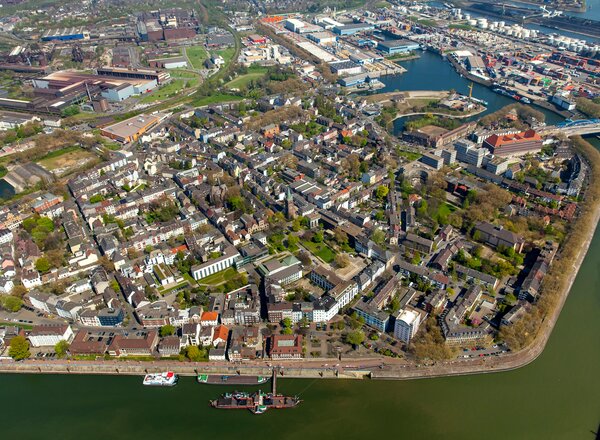
Background
Although cities only occupy around three per cent of the earth's surface, they consume over 70 per cent of available energy globally and are responsible for over 70 per cent of global energy-related CO2 emissions. However, other environmental impacts are also caused here that have so far been completely ignored in urban development: For municipalities or cities, there is as yet no defined standard for the holistic assessment of potential environmental impacts.
In Ruhrort, a blueprint for the world's first Life Cycle Assessment (LCA) for an urban neighborhood has been established. This comprehensive approach is a key element for future urban development: only by considering a wide range of impact categories and indirect environmental effects can a city's environmental footprint be holistically minimized and the shifting of burdens prevented.

Methodology
The City Life Cycle Assessment (LCA) adheres to the Greenhouse Gas Protocol for cities, complemented by life cycle assessment and environmental impact categories, following the principles and guidelines for conducting life cycle assessments as per ISO standards 14040/44.
In this framework, the city LCA evaluates the potential environmental impacts of Duisburg-Ruhrort, stemming from energy use (heating and electricity) in private homes, trade, commerce, and services sector (TCS), industry, private transportation, goods movement (via road, water, and rail), as well as waste and wastewater management, building infrastructure, and private consumption. These findings establish a foundation for setting evidence-based reduction goals and support the formulation, execution, and tracking of strategies and actions for reduction.

Results
The absolute results of the impact assessment for Duisburg-Ruhrort for 2021 are shown below for the most relevant impact categories. No primary data is yet available for private consumption. It is therefore not taken into account here nor in Figure 1. To derive the environmental costs, the amount of environmental costs caused by private consumption is estimated using UBA figures.
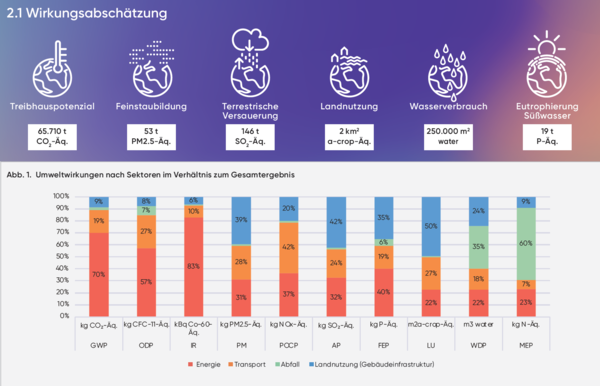
Environmental costs
The environmental costs for the Duisburg-Ruhrort district in 2021 amounted to 20 million euros, inclusive of private consumption.
Fig. 1 shows three main hot spots: Energy (in particular heat from private households and electricity and heat from companies in the tertiary sector), transport (in particular private mobility and goods transport (road) and building infrastructure.
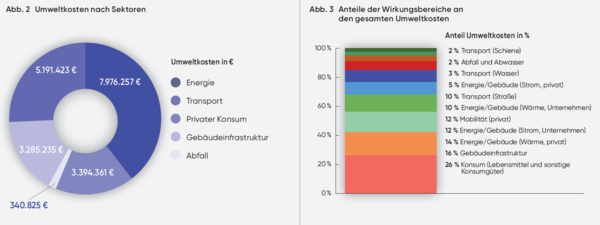
Conclusions
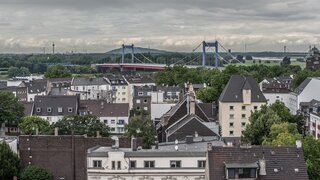
Energy sector
The environmental impact in the energy sector is primarily determined by energy generation in the tertiary sector, followed by the private households sub-sector. The industry sub-sector plays a negligible role.

Transport sector
The environmental impacts in the transport sector are primarily determined by road transport and, to a lesser extent, by water transport. Rail transport has a negligible contribution, with the exception of the water use impact category. Private mobility has the highest contribution to all impact categories, followed by freight transport. Other transport (company vehicles, waste disposal and street cleaning) has a negligible contribution.
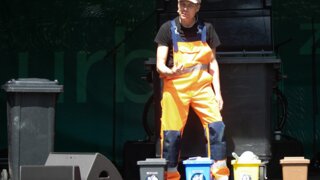
Waste sector
In contrast to the energy and transport sectors, the waste sector is less relevant and is largely caused by direct emissions from the incineration of waste and wastewater treatment.

cross-sec
The consequences of human activity go far beyond climate change, as the LCA demonstrates clearly for the first time. Based on relevant and robustly calculable environmental impact categories and with a view to the protected goods ‘human health’, ‘ecological health’ and ‘resources’, the LCA serves as a basis for the sustainable neighbourhood development of Ruhrort. The LCA can be used to strategically define evidence-based reduction targets. The results also serve as an evidence basis to support the development, implementation and monitoring of reduction strategies and measures.